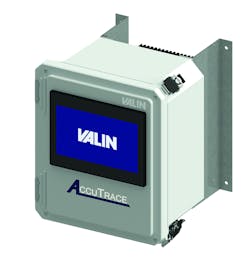An operator managing a fluid handling process is only as effective as their ability to work with a given controller. If there are factors that keep this individual from doing what is necessary for a smooth operation, adjustments need to be made. Usability and programmability are two of the more important factors when determining which controller best fits the needs of the process. However, there’s no way around the fact that cost plays a predominant role in the decision as well.
Discrete PID controllers
Most control panels designed for fluid handling applications use a discrete proportional integral derivative (PID) controller. These are common in the industry mostly due to their profound versatility. Discrete PID controllers can handle a variety of inputs and use a built-in, robust algorithm. This allows the controllers to handle a multitude of unique variables and conditions. Furthermore, discrete PID controllers contain many useful outputs. These types of controllers are designed to handle the majority of I/O that an operator typically needs for an industrial process with a low amount of variability. Eliminating as much variability in the process outcome is critical, as variability oftentimes equates to scrap, which in turn, reduces profit.
These controllers, while versatile, may not provide a good user experience. In order to program them, the operator must navigate a series of draconian menus. The menus inherent to a typical discrete PID controller can be difficult. The operator needs to be able to set values for proportional, integral and derivative functions, as well as process set points, alarm trigger points and the type of alarm required. It can be time-consuming, frustrating and fallible, which would cause the controller to function at a less than optimal setting, leading to increased scrap. Furthermore, the display text can be unclear; for example, it may show text such as "OUT" or "OPT," and the operator will need to know that this stands for output. Then they must toggle through and find the proper output desired.
In general, people can easily accomplish these types of programming tasks. Most frequently use search engines, which display clear results. These types of controllers are not exactly user-friendly. To complicate the issue, with the retirement of baby boomers, the number of engineers that know their way around these types of controllers have been dwindling. It is more difficult to find individuals who are part of a newer generation and can effectively navigate these systems.
Manufacturers have tried to combat this by creating downloadable software and equipping the controllers with USB ports. An operator would be required to interface with a 4- by 4-inch square with buttons and a tiny display. Now, with the software, users can interface on a computer screen with their laptops. With this approach, an operator can open an interface and easily set PID values, alarm functionality, input/output ranges, etc. It became a much more pleasant interface and experience. This approach can also save downtime. The last thing a company wants when one of the controllers goes out is to see their technicians working on these pieces of equipment with an owner’s manual in their hand, trying to get the controller to work again.
Unfortunately, many large end users have restrictive IT policies that do not allow for manufacturers software to be installed. So, this option is not always a viable solution.
Programmable logic controllers (PLCs)
Programmable logic controllers (PLCs) are another option that can offer a better user experience. They have larger screens and contain an integrative software that ultimately delivers a better translation than the discrete PID controllers. However, they can be expensive and may lock the customer into service and licensing agreements.
The programming, while easier than with discrete PID controllers, is also typically more complex than the simple control loops required by most customer applications. Imagine taking a sledgehammer to pound a nail into a wall. The amount of power the PLCs can muster is sometimes greater than it needs to be, thus the heavy price tag. PLCs are typically used in applications such as linear motion, robotics and others involving advanced math algorithms.
Board level controllers
Most fluid handling applications can benefit from an option that is more user-friendly than the discrete PIDs — without being limited by IT restrictions — and less expensive and powerful than PLCs. This best-of-both-worlds approach is achieved by using a board level controller as the brains of the panel and a human-machine interface (HMI) with a pleasing and intuitive interface. The HMI is fully customizable and easy to use, thus providing a better user experience. The HMI is set to display clear language and uses a touchscreen with a more intuitive, understandable interface. Its features appeal to the younger generation in the industry.
This best-of-both-worlds approach is achieved by using a board level controller as the brains of the panel and a human-machine interface (HMI) with a pleasing and intuitive interface.
The board controls combine the punch and computing power of a traditional PID controller with a price point offered by bulk purchases of mass-produced circuit boards. Particularly ideal for any thermal process containing a thermocouple and a heater where the operator needs to maintain a certain temperature, board controls are continuing to grow in popularity. With applications such as heat trace, process heat or superheaters, the board level control allow operators to do what they do best — with less complex programming and troubleshooting.
Nathan Ehresman is a business unit manager of process heat for Valin Corporation, a technical solutions provider for the technology, energy, life sciences, natural resources and transportation industries. Valin offers personalized order management, on-site field support, comprehensive training and applied expert engineering services utilizing automation, fluid management, precision measurement process heating and filtration products.



